Blog
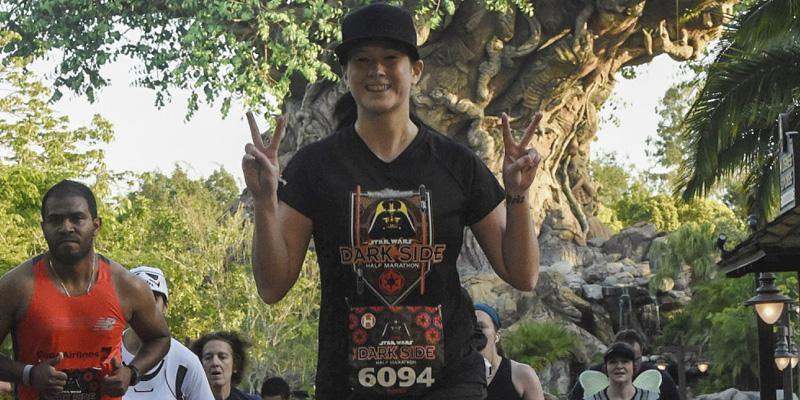
Best Runcations
When training for a race, going on vacation can be anything but relaxing. You must plan where to do your runs and schedule your itinerary such that you can fit everything into your day without compromising your training. A recent phenomenon is the “runcation,” where runners plan their races and vacations together, giving them the best of both worlds.
New York Road Runners Five Boroughs Series
Want to see New York from an entirely different perspective? Sign up for one of NYRRs races through the five boroughs, such as the NYC Half Marathon, Brooklyn Half Marathon, Queens 10k, Bronx 10 Mile, or Staten Island Half and tour the streets while they are shut down especially for you. Afterwards, visit Coney Island, check out the Metropolitan Museum of Art, or spend the day in Times Square.
Estes Park Half and Full Marathon
Rocky Mountain National Park not only provides some of the greatest views in all of Colorado, but also one of the most challenging and scenic road races. The Estes Park half/full distances takes runners to elevations nearly 8,000 ft above sea level, making this race the highest elevation marathon on a paved surface. Afterwards, explore the shops in Rocky Mountain National Park and treat yourself to dessert and a beer at the local brewery. Post race, shake out your legs by exploring one of the park’s many nature trails while taking in breathtaking views of the surrounding mountains, elk herds, and wildlife.
Disney World Marathon
For runners with children, what better way to cap off a training cycle than taking the family to Walt Disney World as an excuse to run a half or full marathon? With many races to choose from, including the Tinker Bell Half Marathon, the Wine and Dine Half Marathon, the Walt Disney World Marathon, the Star Wars Half Marathon, and the Disney Princess Half, there is sure to be an event that fits your family’s interests. Each event also has a children’s race, which creates special memories for everyone involved.
Indiana Dunes National Lakeshore
Looking for a non-race vacation that is fun for the whole family, yet still provides plenty of chances to run? The Indiana Dunes, located on Lake Michigan, has 25 miles of sandy beaches complete with approximately 25 miles of runner-friendly nature trails. Located directly on the South Shore line, a quick trip into downtown Chicago is made easy. This runcation is perfect for city, beach, and nature lovers alike.
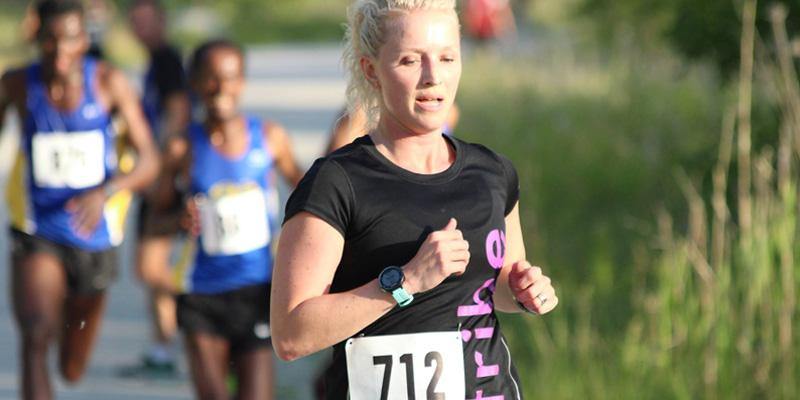
Summer Running: Tips to Help You Beat the Heat
Summer is here and the heat is on! With high temperatures and humidity, running in the scorching sun can be intolerable. Our Tiux ambassadors share their tips on how to beat the heat and stay safe during the summer months.
Trails and parks with lots of shade can help you stay cooler during your run. Look for any opportunity or location to avoid direct sunlight. Also consider outdoor space along the water, where you might be able to catch a nice cool breeze. – Heather Gardner
My tip for running in the summer heat is to hydrate, hydrate, hydrate!! Water is not necessarily enough — Gatorade or something similar will go a long way!! – Meredith Reccoppa
I would say that my favourite trick is one I learned from my coach. When racing, get your crew to have a ziplock baggy of ice to give you at the aid stations. Wrap it in a buff around the back of the neck, or stuff them down your pack or shirt. Pretty much the best thing ever. Another good one is to have an extra water bottle on hand to pour over your head as you go. – Hilary Matheson
One thing my wife and I like to do in our subdivision is run through people’s sprinklers. Also, if possible, scale back you distance on super hot/humid days and move the longer runs to cooler days. – Mike van Mil
Use Body Glide! Be aware that when you sweat, you run the risk of chafing so I’d suggest using something like Body Glide on those potential areas to avoid any surprises! Lastly, slow down. This will help you avoid the possibility of overheating. Your body will already be higher than normal because of the heat. – Linda Wong
Why not tri? A triathlon may not be your thing, but cross-training with some biking and running is a great way to beat the summer heat. Taking a dip in the pool or whizzing down the trail on your bike is certainly much cooler than pounding the hot pavement during a run. It will also give provide great cross-training, a new challenge, and potentially a new love in multi-sports! – Christina Wood
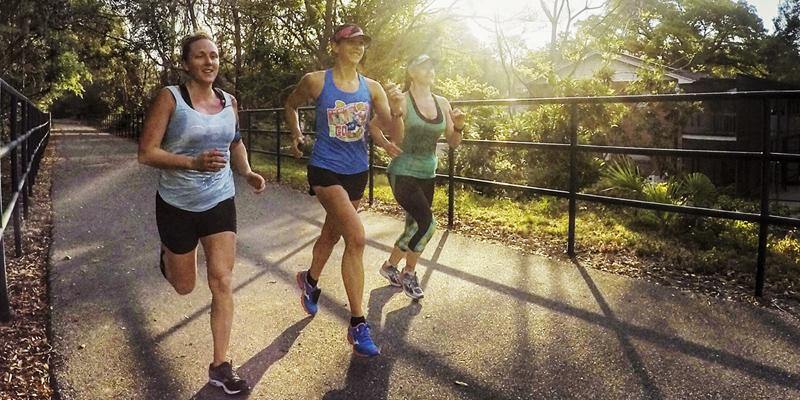
Training for the Chicago Marathon
This is a guest post by Christina Wood, Sports Performance Coach at The Athlete Factory.
Training for the Chicago Marathon officially kicked off for me in June. This will be my 6th full marathon and 4th (yes, 4th) attempt to BQ. I missed my qualifying time by 3 minutes at my most recent marathon, so I am pouring my heart and soul into this training cycle in hopes to turn my Boston dreams into a reality.
The next few months of my life will be dedicated to preparing for race day. From early morning runs, time in the weight room, to what I read, eat and how I sleep. I, however, do have life outside of running that involves a family and a full-time job, so it will all be a balancing act. But I am ready and excited to get training going and go see what I can do come race day!
Here is a look into how I am training for this upcoming marathon…
Training
Over the years, I have read several books on running marathon training from Galloway to Hansons. I enjoyed the cross training information in the Unbreakable Runner and the speed work from the Run Less Run Faster book. I have pulled things from many of these readings to develop a program that seems to suit my training needs and life schedule the best. This program involves three key runs per week, including speed work, a tempo run and a long slow run. Since I ran my first marathon in 2010, I have always followed a three per week schedule and it has worked best with my training and lifestyle, so I continue to do so.
Cross Training
As a performance coach and gym owner, I am most comfortable and confident in my strength and conditioning program. I have three cross training workouts per week that include one day of biking (I’m a spin instructor) followed by lower body strength training, an upper body strength training day and a metabolic conditioning day. I feel as if it accompanies my running program nicely, making me a stronger and faster runner, as well as aid in recovery from my long runs.
Nutrition
Ahhh nutrition. I have to admit, I was one of those “run to eat” folks who thought I could finish a run and devour everything in sight. It actually caught up with me pretty bad during my first marathon when I ended up gaining several pounds by race day! As a bit of a foodie, I continue to struggle with making healthy choices especially post run, but I have certainly gotten much better over the years eating cleaner the majority of the time. Most days I measure my food to control my portions and make sure my meals are fitting into my macros. I fuel and hydrate much better these days and it shows during my performance and recovery. Of course I still do enjoy my chips and beer post long run, old habits die hard, but moderation is definitely key in maintaining a healthy racing weight
Education
I’m a firm believer that we should never stop learning, especially when it comes to things that bring us great passion. I read at least one running-related book each month from training and nutrition, to mental game and biographies. I gain so much insight, inspiration, knowledge and motivation from reading about running. I am almost finished with The Runner’s Brain right now and I am deciding what to read next!
Balance
I never want marathon training to feel like a full time job. I already have one of those and I actually rather enjoy it. Of course sacrifice and sometimes stress do come with training for the full distance, but I do not allow it to consume me. Between my family, running a business and training for a marathon, I have quite a bit on my plate, but I do my best to always keep my priorities in check. A happy runner is a healthy runner after all, and the only way to stay happy is to stay balanced.
Tribe
No great things can be done alone. Even though running is technically an individual event and not a team sport, it is so important to have a great support system of fellow runners. In the past, I often trained alone. The trail would get very lonely and there were times where I gave up rather easily out there. More recently though, and especially now for this upcoming marathon, I have gathered my tribe. We have similar paces and goals, and are there to push, encourage and motivate one another. In fact, we are all training for the same event, so we can not only help each other through training but also come race day!
Attitude
In the past, I have taken an all or nothing approach to training. I was so focused on one goal and if it seemed like that wouldn’t happen, I was be absolutely devastated. Having experience three failed attempts to BQ, I am much more aware that sometimes, despite our efforts, things just don’t go our way. I am much better equipped now to handle whatever may come my way. But I also have more motivation and drive now than I ever have. I want that BQ so bad. I am laser-focused, working hard and visualizing my success!
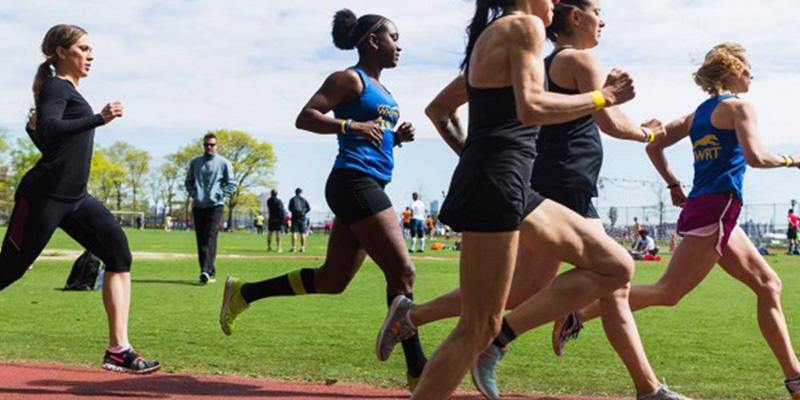
Falling in Love and Making the Commitment to Run
This is a guest post by Jerlyn Thomas. Photo by Ben Ko.
Running and I have had an on-and-off relationship since 2008. It knew it was a “Friends with Benefits” situation, as it helped me cope with my brother’s death, so there wasn’t much by way of support or rules in the process. It left me stranded many times with injuries and, now and then, we’d go through separations until it beckoned me again. It always seemed like we just used each other until we both felt guilty in the end.
We had an awkward relationship during 2012, and had spent a great deal of time together when I suddenly decided to challenge myself with a marathon (you know, to take our relationship to the next level). I didn’t want to make the commitment of signing up, but followed a schedule anyway. Eventually, an internal mediator chimed in, letting me know how Running felt, and encouraged me to sign up officially. I did. I became a marathoner and Running felt good for the first time. A couple months later (in January of 2013), I was injured while preparing for the Miami Marathon and I thought our relationship to be over. I started seeing my physical therapist instead and, because I missed Running so badly, thought about getting injections in my knee (but didn’t) to help stabilize our rocky relationship. Even if I wanted out of the arrangement, I had already booked the flight, paid entry to be #MiamiFamous, and my AirBnb room was not going to be wasted. I was going to give Running another chance.
During Miami, like a slap in the face, my goal wasn’t met. The run was excruciating. My KT tapes fell off mid-race and I missed my target goal, coming in a minute later than I wanted. I was devastated. For weeks I beat myself up about it and decided to separate from Running again. What I didn’t understand was why my running peers didn’t think it was such a big deal. They didn’t think a divorce was the right resolution, and I had already invested in all this time and gear. Some of them wanted what Running and I had because their relationships hadn’t progressed as much as mine, or they wanted me to share what they had developed. Even so, I was putting my foot down, and I didn’t want to compromise.
Let’s make some things clear: At the beginning, Running knew what was up. For 2013 it knew that I called myself “The Solo Runner.” I only saw familiar faces at races but met no one and spoke to no one. My heart wasn’t opened to meet others. I thought I was doing fine by signing up for races now-and-then to make Running happy. After Miami, as soon as I was strong again, it wanted more. It became obsessive and got into my head. I knew if I ever signed up for a marathon again, I could not be injured and I definitely wanted to PR like I had intended.
Then, out of nowhere, Running started slowly taking over my social life. I started to resent it a little but I tried to be open-minded. I still didn’t think meddling was the practical way to handle any relationship. It had begun introducing itself to others at races to find friends with common interests, and started a log of the time we spent together to make sure we were always making our dates to keep our relationship healthy and not overbearing. All of a sudden, I started appreciating those things. I agreed that we could rekindle. In the end our bond was so strong that it introduced me to a great deal of “firsts.” It led me to my first running vacations, focused running friends, track class and the Dashing Whippets. When I completed my 3rd marathon in December 2013 having Running in my life had me surpass all my goals. I had run the marathon the way I wanted. I was in love. I had assessed why I had fell in love in the first place and the support that I had from everyone around just made our relationship stronger.
I don’t know how much longer our open relationship will last, but I took the commitment. I’m in love again, and I trust Running wholeheartedly. To honor it, I even signed up for many races for 2016 as my resolution — hopefully our journey will last for decades to come.

The Importance of Sleep for Runners
Recovery begins the moment your workout ends, and how you approach your recovery will dictate future performances. Even though sleep is just as important as practice and the workouts themselves, our “more is better” culture actively discourages many people from receiving adequate rest.
The benefits of allowing your body to adequately sleep are numerous and include quicker muscle recovery, a clearer mind, faster metabolism, reduced stress, reduced risk of injury and improved athletic performance. As a general rule of thumb, sports scientists recommend that runners sleep an additional 10 minutes each night per 10 miles of weekly running. For instance, for someone who runs 30 miles a week, he or she should sleep an additional 30 minutes a night, beyond the recommended 7–9 hours of sleep. Why is additional sleep important? Muscle repair and recovery happens during REM sleep, which only occurs for approximately 10 minutes of every 90 minute sleep cycle. Therefore, the more REM sleep that occurs, the better body will recover.
Just as there are no shortcuts when it comes to working hard to improve running performance, there are no shortcuts when it comes to a good night’s rest. The following are tips for developing and sticking to a sleep routine:
Treat Sleep with the Same Importance as You Treat Your Workouts
Just as you would never be late for practice or a meet-up, do not let yourself put off going to bed at night. Schedule sleep into your routine the same way you schedule long runs or track sessions.
Avoid Caffeine After 3 PM
Energy drinks, coffee and certain teas all provide a potent caffeine kick. If you have trouble falling asleep at night, it may be linked to your caffeine intake throughout the day. If you find that you struggle to stay awake in the afternoon, consider taking a 10–20 minute nap to re-energize, which will also have the added benefit of clearing your mind and improving creativity.
Limit Alcohol Consumption
Although beer, wine and liquor may initially help you fall asleep, alcohol can disrupt normal sleep cycles, making these periods less restful and reducing their benefits for recovery.
Limit Screen Time
The backlit glow of our computers, tablets and cellphones trick our brains into thinking we should be awake. Avoid electronics for an hour before bed and instead, opt for stimulating your brain the old-fashioned way, such as with a book or crossword puzzle.
Treat Sleep with Additional Importance before Major Races
In the final few weeks before your goal race, make sleep the number one priority of your day. During taper, your body works extra hard to repair itself from the previous months of training abuse. If you are feeling extra tired, be sure to give your body the additional rest that it craves.
Practice Deep Breathing and Meditation
Relying on sleep aids such as melatonin, Nyquil, Tylenol PM or other over-the-counter sleep medications is not only risky, but decreases the quality of sleep you receive. Instead, learn ways to calm your body and lull it to sleep naturally, which will have additional benefits for your athletic performance.
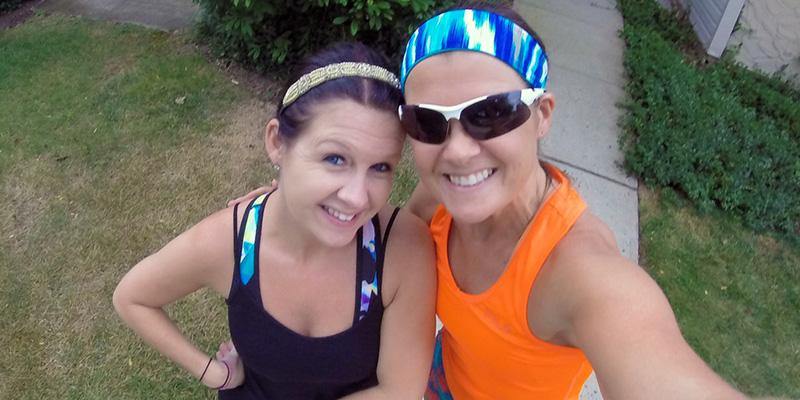
How the Running Community Supports One of Its Own
This is a guest post by Meredith Reccoppa, 9x Marathoner and 3x Boston Qualifier.
In October 2015, I suddenly lost my beautiful sister; my best friend. My sister was a runner herself. She never raced, but loved nothing more than running the beautiful trails or her favorite loop around town. We ran together and logged many miles, always laughing so hard on our runs. I miss that so much!
In November, a month after she passed away, I started #MilesforMelissa on Instagram and invited the running community to take part. It was a way to keep my sister’s love of running alive through logging miles in her memory. Continuing to run has been instrumental in the healing process and #MilesforMelissa was a way to keep me motivated during this difficult time.
Since starting, we’ve logged over 3,289 miles (from Nov to Feb). The running community is truly amazing! Many runners gathered in groups and have dedicated their races to my sister. I am completely humbled by the number of people from all over the world that have joined us and showed their support.
Today, every mile I log is in memory of my sister. For this month, #MilesforMelissa will take place from March 26–29. My sister may no longer be here to run beside me, but I know she will forever be running beside me in spirit.
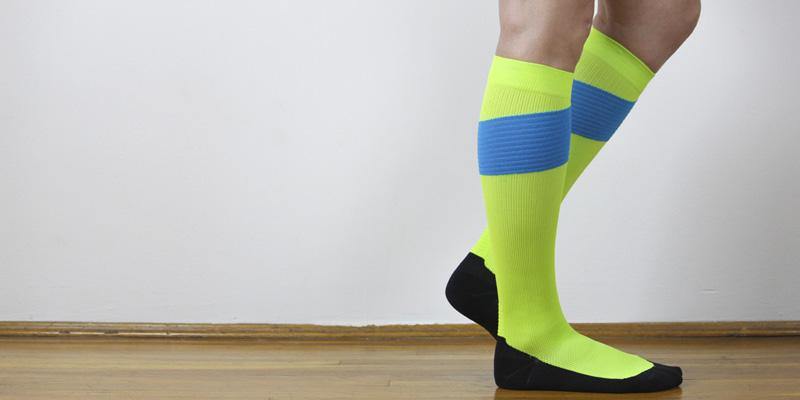
Graduated Compression Socks for Everyday Wear
In recent years, compression socks have experienced an increase in popularity among runners. Ten years ago, compression socks were only ubiquitous among grandmas and Paula Radcliffe, yet now it seems as though 75% of marathon finishers are wearing the brightly colored knee socks. Indeed, the benefits of compression socks are well known, as they reduce muscle soreness, improve recovery, and improve circulation. However, did you know there are numerous other uses for compression socks outside of running?
If you have a desk job…
People who spend their days sitting down are at an increased risk of developing a number of serious health issues due to inactivity throughout the day. In fact, many doctors now consider sitting to be the new smoking. One reason is that the body’s blood circulation is decreased, due to limited movement. Compression socks gently squeeze blood vessels, which draws blood to the constricted areas. This benefit is especially important for your feet and lower legs, which suffer the most during the work day.
If you spend long hours on your feet…
Waitresses, nurses, doctors and laborers often spend their entire shift standing, without getting a chance to sit down. At the end of the day, your feet and lower legs can be visibly swollen, which leads to pain and soreness. Wearing compression socks for work will reduce inflammation and muscle soreness by increasing circulation and lymphatic flow.
If you are pregnant…
Pregnant women often suffer from edema in their lower limbs towards the end of their pregnancy. If advised by a doctor, compression socks can provide relief, comfort and support to women who are suffering from poor circulation.
If you are a frequent air traveler…
Especially on long flights, air travelers are at an increased risk for developing deep vein thrombosis, which is a potentially fatal blood clot. Compression gear helps minimize the risk of developing a blood clot by improving circulation throughout the lower extremities and also helps to relieve the general stiffness that people develop during flights.
If you are bedridden…
Anyone who is confined to a hospital bed or couch for an extended period of time can benefit from compression socks. When lying down, blood is likely to pool in the legs, leading to improper circulation as well as swelling, inflammation and soreness. Compression socks decrease the chances of developing these issues.
If you have lower leg conditions…
Patients with disorders including varicose veins, stasis, edema, or skin changes can benefit from the improved circulation that compression wear provides. However, people with certain medical conditions are not proper candidates for compression gear. Always consult a physician before purchasing compression socks or sleeves, and find out the proper compression rating for your condition.
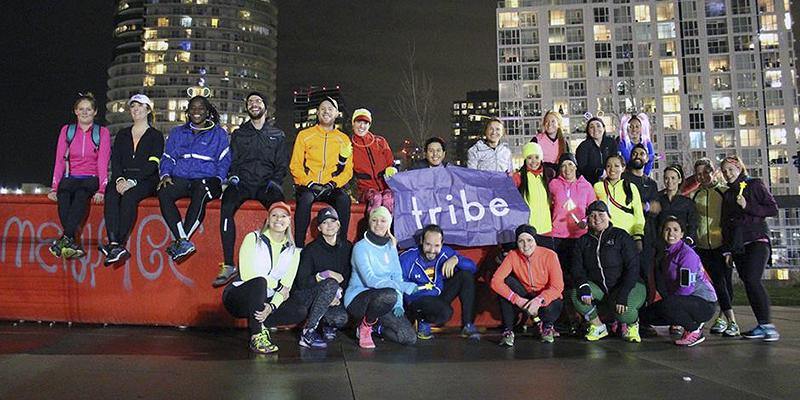
Five Tips for a New Runner
This is a guest post by Heather Gardner, founder of Tribe Fitness.
With a new year comes opportunity for a fresh start and new fitness goals. For you, that might mean finally lacing up those sneakers and experiencing for yourself what all this run buzz is about. To help you kick off 2016 on the right foot, here are my five tips every new runner should consider.
Get Proper Shoes
Wearing the correct running shoes for your feet is key for both comfort and injury prevention. Visit a running specialty store and chat with a professional about your foot type, gait, and style of running. Running in old or worn out shoes will only lead to pain and injury. With a variety of price points, consider this expense an investment in your health!
Don’t Worry About Your Pace
As a beginning runner, consider your pace goal to maintain an easy or “conversational” pace for the duration of your run. You should be able to breathe easily and carry on a conversation with those you are running with. As a new runner you might also consider starting with a run/walk program, where you run for a certain amount of time, followed by a brief period of walking. This is a great way to get active while building your fitness level and endurance. If you are in the Toronto area check out the free My First Race mentoring program starting with Tribe Fitness on February 9th.
Learn Proper Form
While I often encourage new runners to move in a way that feels most natural to them, consider these points for a relaxed upper body.
- As your elbows pull back, keep your arms bent at 90 degrees with your hands at waist height, where they might brush your hips.
- Keep your spine tall with your head up, your back straight, and shoulders away from your ears and level.
Sign up for a Race
One of the easiest ways for me to get motivated is to spend money and commit to a race. As a new runner, be sure to set a realistic length goal and give yourself enough time for proper and safe training. Once your race is on your calendar or in your phone, you’ll have something to motivate you on a daily basis. Wondering where to start? I suggest The Race Roster Spring Run Off.
Join a Tribe
Company. Accountability. Speed. Fun. Toronto has an amazing number of run crews each adding something unique to our growing and evolving run scene. Check out the crew’s online presence – can you see yourself with them? Shop around giving each one a test run, and find a crew that works for you, where the runners have similar goals and the workouts fit into your busy schedule. Looking for a place to start? #JoinTheTribe

Why Cadence Matters
For runners, an improved cadence translates to a better running performance and technique. As such, paying attention to your cadence is critical for those who want to develop an efficient running form and stride.
Running cadence is the number of footstrikes per minute. According to Jack Daniels (the running coach, not the whiskey brand!), the ideal cadence is 180 steps per minute. Whether or not this holds true for everyone, improving your cadence will help maintain proper and efficient form.
Improving Your Running Cadence
With a slower cadence, you are in the air longer and this means that as you stride, you will land harder and can risk injury. A higher cadence will reduce the impact of running in your ankles, knees and hips. It will also reduce overstriding, which can lead to injuries related to vertical displacement.
Here are few quick tips to help increase your cadence:
- focus on taking smaller steps when running
- Use a running app on your smartphone to help set your pace
- Keep your arms high for greater efficiency
- Wear lighter shoes as this requires less effort to move your feet at a faster rate
Every runner, whether you’re just starting out to decades of running experience, can benefit from a faster cadence. With a little time, you’ll start seeing improvements in your running performance.

Start 2016 on the Right Foot
2015 is winding down and it’s time to take a moment to reflect on your goals from last January. What are your proudest accomplishments? What are some goals you want to carry forward to 2016?
Get ready to embrace new possibilities and amazing opportunities as we step into the new year. Here are some tips to help you thrive in 2016 and make it a year full of success!
Write Down Your Goals
The simple act of writing down your goals will force you to clarify and commit to what you want to accomplish. In doing so, you will be motivated to take action and see it through.
Be SMART About It
Set effective goals by using the SMART criteria:
- Specific – A goal should be specific enough that you know what you want to achieve, why it is a goal for you and how you will go about achieving this goal.
- Measurable – Being able to measure your goal will help you track its progress and keep you motivated along the way.
- Achievable – A goal should be challenging. However, if you set expectations too high, you may get frustrated and disappoint yourself.
- Relevant – Each goal should matter to you so that you are focused and motivated.
- Time-based – Set a date of when you plan to achieve each goal.
Review Them Frequently
Reviewing your goals weekly or monthly will allow you to track your progress and keep you motivated. It also provides an opportunity to identify the next steps to achieving your goal.
Setting goals will help you decide what you want to achieve in life. Keep in mind that success doesn’t happen overnight. The key is to show consistent progress towards your goals, which in turn will lead to a richer and fuller life.
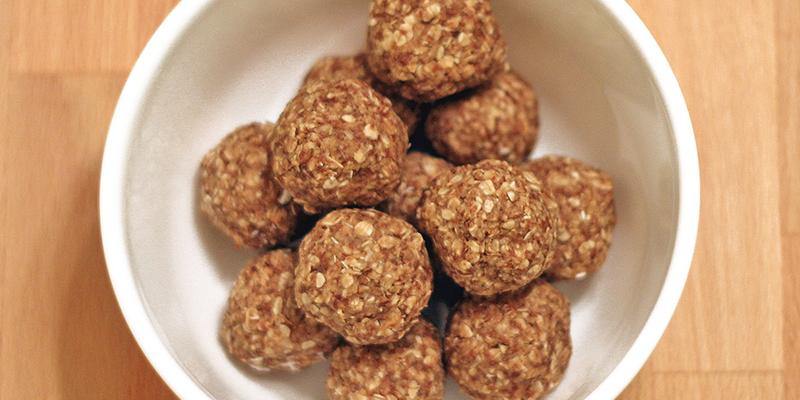
Peanut Butter Protein Balls to Fuel Your Run
Here’s a super easy recipe that’ll give you a boost of energy for your workouts. These peanut butter protein balls are so simple to make and requires no baking. Now how awesome is that!
Ingredients:
- 1 cup oats
- ½ cup peanut butter
- ½ cup ground flaxseed
- 1 tablespoon honey
- 1 serving of protein powder
Preparation:
- Combine all the ingredients in a bowl and mix well.
- Form dough into 1” balls. Add more peanut butter if the consistency is too dry.
- Refrigerate in an airtight container.
Makes 14 balls that will last a week. Try your own version by adding other ingredients like dates, cacao powder and chia seeds.
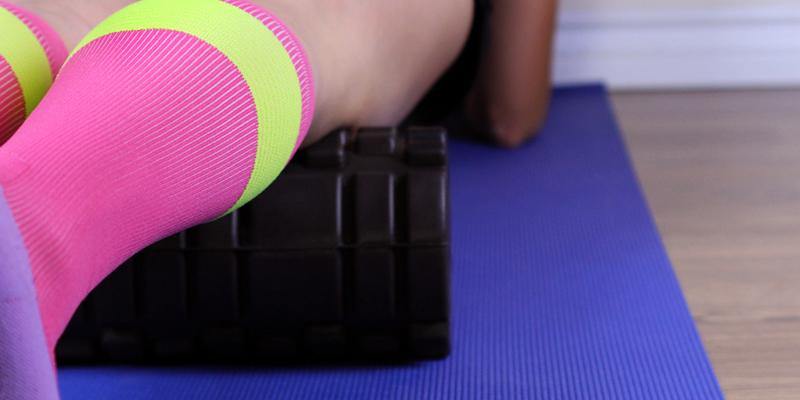
Recovering from a Long Run
Whether you’re competing in a race or training for a marathon, running a long distance will put a strain on your body. Here’s our guide to helping you recover faster so you can run again sooner.
Rehydrate
Once you complete your run, drink plenty of fluids to prevent dehydration. Water is always a good choice but a sports drink is more helpful to replenish your electrolytes after strenuous activity. An easy way to check your hydration level is with your urine. Keep hydrating your body if your urine is darker than a pale yellow color.
Refuel
Eating carbs and protein 30-60 minutes after a long run is important to helping your body recover. Carbs will restore glycogen levels, while protein will help repair damaged muscle tissue. It’s always best to have a recovery snack ready to optimize your recovery.
Keep Stretching
By using a combination of dynamic and static stretching before and after your run, you can prevent unnecessary tears and damage to your muscles. Warming up is an obvious no-brainer, but the key really lies in the post stretch routine. Hold your stretches for at least 30 seconds to achieve the full effect.
Compression Socks
Wearing compression socks during and after your run will speed up recovery. Performance compression socks help deliver oxygenated blood to your muscles, while pumping deoxygenated blood back to your heart and removing lactates. Stimulated blood flow and increased oxygen to your muscles will keep your legs fresh by reducing muscle fatigue and soreness.
Roll it Out
Using a foam roller to help release the tightness and tension between the muscles and fascia caused by running. A foam roller also helps decrease the risk of injury by improving flexibility and range of movement. If you don’t have a foam roller, try using a lacrosse ball or a massage stick.
